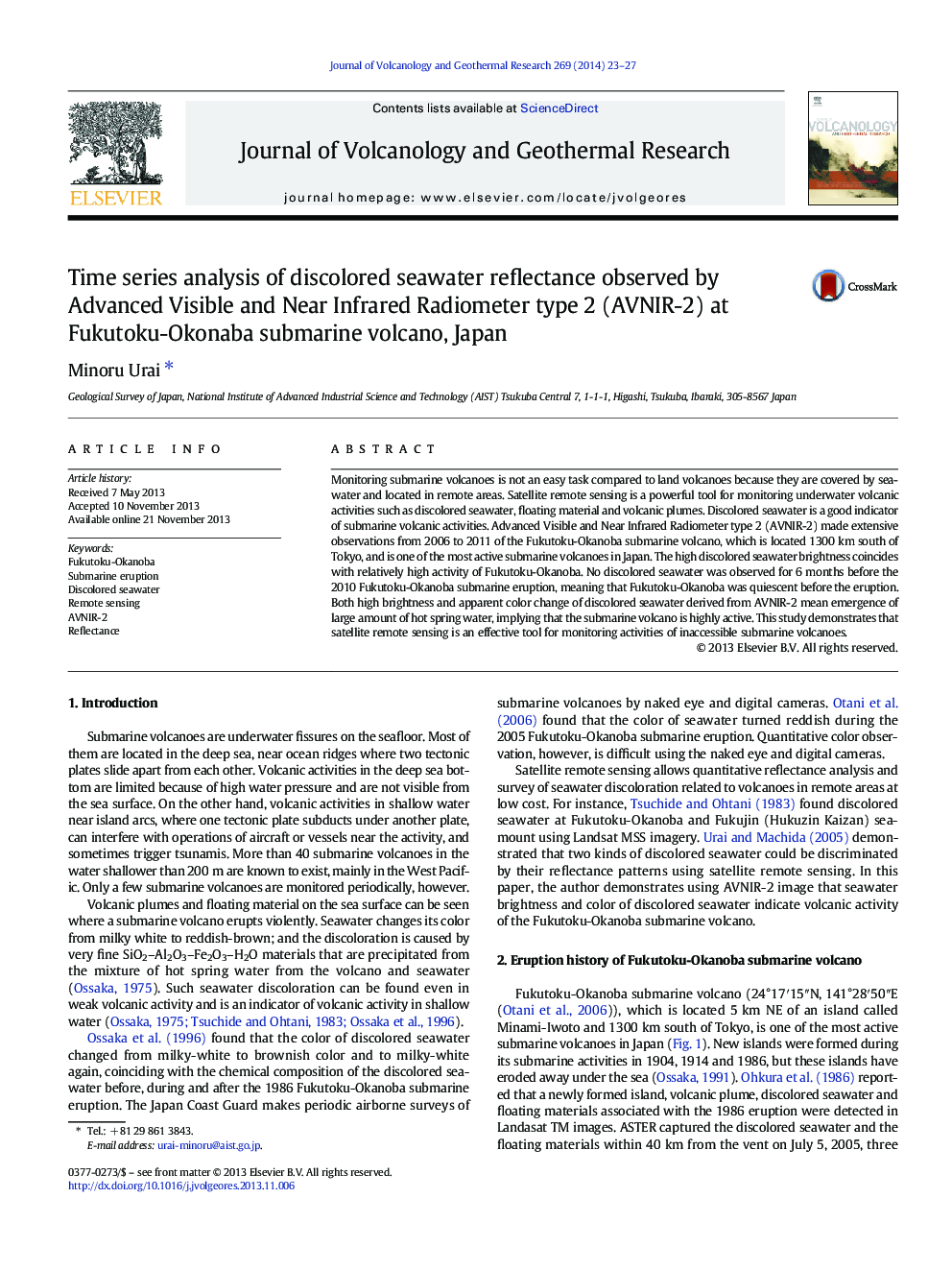| Article ID | Journal | Published Year | Pages | File Type |
|---|---|---|---|---|
| 4712486 | Journal of Volcanology and Geothermal Research | 2014 | 5 Pages |
•Discolored seawater research was conducted at Fukutoku-Okanoba submarine volcano.•The brightness and color change of discolored seawater were observed by remote sensing.•No discolored seawater was observed for 6 months before the submarine eruption.
Monitoring submarine volcanoes is not an easy task compared to land volcanoes because they are covered by seawater and located in remote areas. Satellite remote sensing is a powerful tool for monitoring underwater volcanic activities such as discolored seawater, floating material and volcanic plumes. Discolored seawater is a good indicator of submarine volcanic activities. Advanced Visible and Near Infrared Radiometer type 2 (AVNIR-2) made extensive observations from 2006 to 2011 of the Fukutoku-Okanoba submarine volcano, which is located 1300 km south of Tokyo, and is one of the most active submarine volcanoes in Japan. The high discolored seawater brightness coincides with relatively high activity of Fukutoku-Okanoba. No discolored seawater was observed for 6 months before the 2010 Fukutoku-Okanoba submarine eruption, meaning that Fukutoku-Okanoba was quiescent before the eruption. Both high brightness and apparent color change of discolored seawater derived from AVNIR-2 mean emergence of large amount of hot spring water, implying that the submarine volcano is highly active. This study demonstrates that satellite remote sensing is an effective tool for monitoring activities of inaccessible submarine volcanoes.
